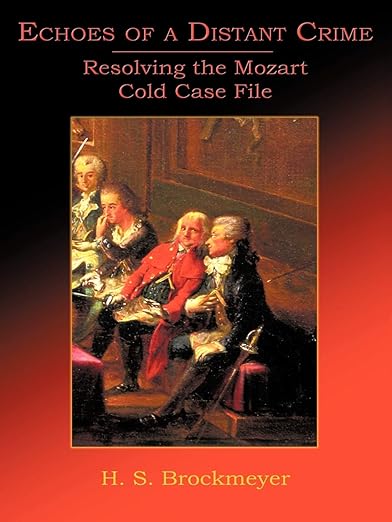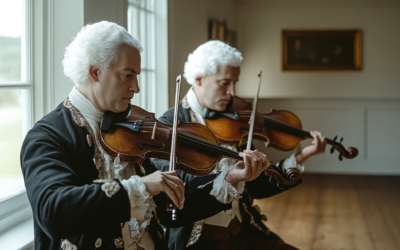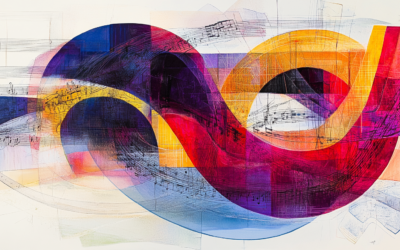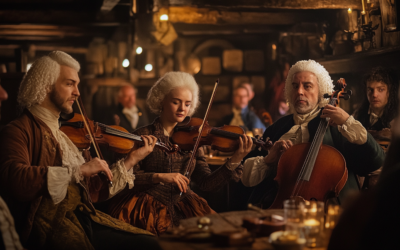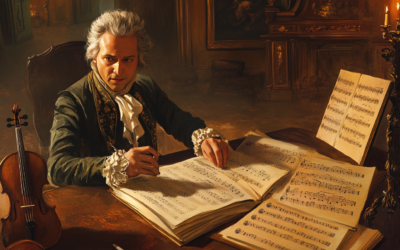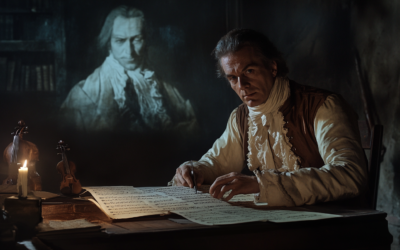Mozart’s Mysterious Letter of July 5, 1791
Unveiling the Truth Behind the Drawing
Mozartrazom is proud to present an extraordinary investigation by H. S. Brockmeyer into the puzzling discrepancies surrounding one of Mozart’s letters to his wife, dated July 5, 1791. What began as a routine request for an image reproduction from the Royal Danish Library turned into a riveting journey uncovering altered artwork, forgotten journals, and a glimpse into Mozart’s personal anxieties during his final year.
H. Brockmeyer’s meticulous research uncovers that the widely reproduced drawing associated with this letter is, in fact, a doctored version. Through detective work and historical cross-referencing, she reveals Mozart’s original, unembellished sketch—a rare insight into his psyche, marked by fears of persecution.
But the mystery doesn’t stop there. Why was Mozart’s original drawing altered? Who decided to modify it, and what does this reveal about how Mozart’s legacy has been shaped over the centuries?
H. Brockmeyer’s article is a must-read for anyone intrigued by Mozart’s life and the intersection of art and historical narrative.
“Mozart was a great musician, but not a great artist; still, there was no need to change his drawing.”
H. S. Brockmeyer
The Mystery of Mozart’s July 5, 1791 Letter
H. Brockmeyer delves into a captivating mystery surrounding one of Mozart’s letters to his wife, written on July 5, 1791. The investigation reveals discrepancies in the artwork associated with the letter and sheds light on Mozart’s personal anxieties and the legacy of his correspondence.
A Search for the Original Letter
The inquiry began with a request to reproduce the drawing associated with the July 5 letter, widely reproduced in collections like The Letters of Mozart & His Family. Directed to the Royal Danish Library, H. Brockmeyer learned that the letter was part of the Boye family donation, likely originating from Constanze Mozart’s time in Denmark. However, the letter did not include the drawing being sought, raising questions about its authenticity.
The Role of the Royal Danish Library
Thanks to the efforts of librarian Laura Søvsø Thomasen, the original drawing was discovered in an 1890 Danish literary journal, Literatur Og Kritik. This journal featured three letters from Mozart, including the July 5 letter with the original sketch. The discovery offered a side-by-side comparison of Mozart’s original drawing and a more “artistic” version that had replaced it in modern reproductions.
Mozart’s Original Drawing vs. the Altered Version
The two drawings differ significantly. Mozart’s original is simplistic and raw, while the altered version attempts to make it appear more polished. The article suggests this modification reflects a deliberate effort to enhance Mozart’s legacy, perhaps to mask his lack of artistic skill in visual arts. Both drawings, however, reveal a similar emotional tone—Mozart’s fear of persecution in his final year.
Historical Context and Legacy
The altered drawing adds to the broader narrative of how Mozart’s legacy has been shaped posthumously. Constanze, known for gifting Mozart-related items, may have played a role in disseminating the letters. Furthermore, the enigmatic tone of Mozart’s correspondence during 1791 is highlighted, referencing his sense of rejection and precarious circumstances.
Conclusion
H. Brockmeyer’s article not only uncovers a significant discrepancy in Mozart scholarship but also raises questions about how historical figures are curated for posterity. The discovery of the original drawing brings us closer to understanding Mozart as a person—flawed, anxious, and yet profoundly human.
You May Also Like
The Mysterious Case of Mozart’s Duets: An Unfinished Story
Mozart’s string duets have long been shrouded in mystery, from his father’s heavy influence in 1768 to his supposed act of charity for a dying Michael Haydn in 1783. These unfinished works reveal more about the composer’s life and struggles than they do about his musical genius.
The Misattribution of Mozart’s K.2 89a (K.6 73i): A Questionable Canon
K.2 89a (K.6 73i), attributed to Mozart, is riddled with issues—missing voices, incomplete harmonies, and even the absence of text. Should this piece really be in his catalogue?
The Borrowed Simplicity: Mozart’s Canons K.555, K.557, and K.562
The canons K.555, K.557, and K.562, often overlooked for their simplicity, reveal striking similarities with the works of Antonio Caldara. These three pieces, dated 1788, demonstrate how Mozart adapted and simplified Caldara’s contrapuntal structures, masking his influences while reflecting the galant style of the era.
Mozart’s Quartet of Lodi: A Dated Work with Many Influences
Mozart’s Quartet of Lodi is often praised as an early masterpiece. But was it really his own work?
Mozart’s Violin Pieces: Substitutes for Failed Movements?
Despite revisions, Mozart’s violin concertos remain flawed, while his minor pieces, K.261 and K.373, surprisingly garner more attention in his correspondence than his major works.
The Questionable Origins of Mozart’s Violin Concertos
Are Mozart’s violin concertos truly original? This article explores the possibility that the Czech composer Josef Mysliveček played a far larger role in their creation than previously acknowledged.

